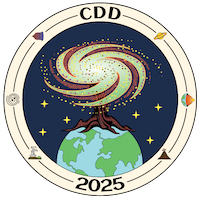Iceberg calving is a complex process often followed by the capsize of the newborn iceberg because of the torque created by the buoyancy and gravity forces. In the case of kilometer-scale icebergs, calving/capsize events can trigger seismic waves (glacial earthquakes) recorded hundreds of kilometers away by global seismic networks. These recordings contain information on the seismic source such...
In most environments, rainfall infiltrates into the porous ground, and forms a body of groundwater which flows into the neighbouring river network. The groundwater discharge is particularly strong near river heads where it triggers seepage erosion, causing existing channels to grow headward. Occasionally, this process initiates the development of new river branches, leading to the formation of...
Rivers act as the primary harmonizer of the critical zone, integrating processes that regulate nutrient cycling, water quality, and energy flow within ecosystems. A deeper understanding of the hydro-biogeochemical processes warrants the study of river chemistry at a detailed temporal resolution, but this is often hindered by logistical challenges associated with traditional sampling and data...
In France, groundwater is one of the main resource for industry, agriculture, and drinking water.
As severe droughts affecting groundwater become more frequent,
the development of forecast has become essential for stakeholders.
The hydro-meteorological platform Aqui-FR (Vergnes et al., 2020), which gather
different groundwater models, is coupled with atmospheric reanalysis and downscaled...
Highly concentrated geogenic CO2 emissions have been reported worldwide. Although atmospheric dispersion is most common, specific topographic and meteorological conditions can lead to surface accumulation in the form of “CO2 rivers”. While catastrophic events, - such as the deadly limnic eruption of Lake Nyos in 1986, are well documented, the behavior of these CO2 rivers remains poorly...

